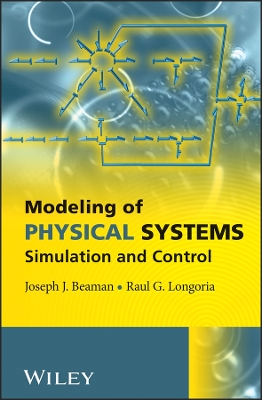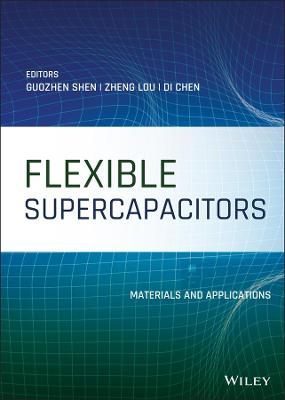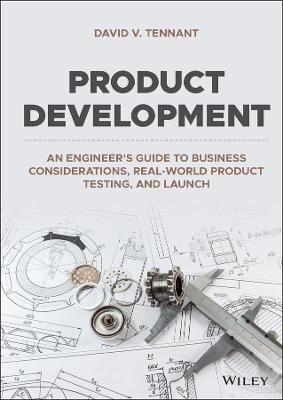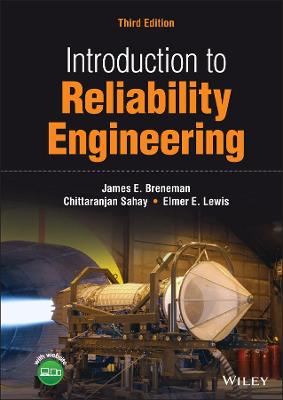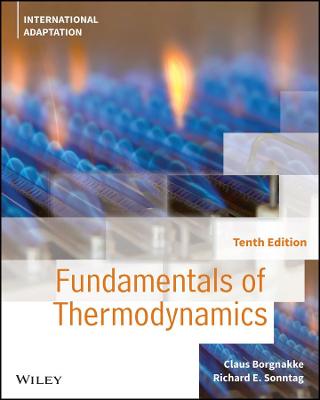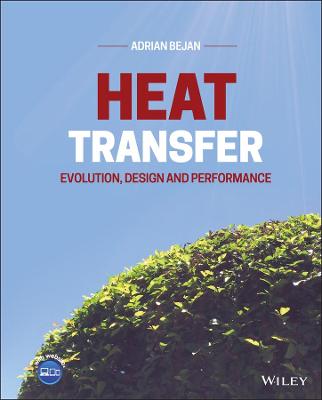Design of Mechanical Elements
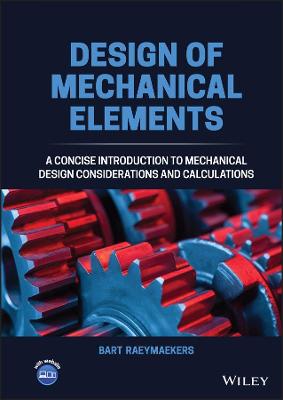 -15%
portes grátis
-15%
portes grátis
Design of Mechanical Elements
A Concise Introduction to Mechanical Design Considerations and Calculations
Raeymaekers, Bart
John Wiley & Sons Inc
02/2022
256
Dura
Inglês
9781119849919
15 a 20 dias
620
Preface xiii
About the Companion Site xv
1 Mechanical Design 1
1.1 Introduction 1
1.2 Mechanical Design Process 1
1.3 Mechanical Elements 4
1.4 Standards and Codes 4
1.5 Uncertainty in Mechanical Design 5
1.6 Design for Safety 9
1.7 Key Takeaways 9
1.8 Problems 10
2 Material Selection 13
2.1 Introduction 13
2.2 Material Classification 13
2.3 Mechanical Properties 14
2.3.1 Strength and Stiffness 14
2.3.2 Elastic Versus Plastic Strain 16
2.3.3 Resilience 17
2.3.4 Toughness 18
2.3.5 Engineering Stress-Strain Diagram Summary 19
2.3.6 True Stress-Strain Diagram 19
2.4 Materials Processing 20
2.4.1 Hot Versus Cold Processing 20
2.4.2 HotWorking 21
2.4.3 ColdWorking 21
2.4.3.1 Process 21
2.4.3.2 Reduction in Area 22
2.4.3.3 ColdWork Factor 23
2.4.3.4 Modifying Material Properties Using ColdWork 23
2.5 Alloys 26
2.5.1 Numbering Systems 26
2.5.2 Plain Carbon Steels 27
2.5.3 Alloy Steels 28
2.6 Key Takeaways 28
2.7 Problems 29
3 Statistical Considerations 33
3.1 Introduction 33
3.2 Random Variables and Distributions 33
3.3 Density Functions 34
3.3.1 Probability Density Function 34
3.3.2 Cumulative Density Function 34
3.4 Metrics to Describe a Distribution 35
3.5 Linear Combination of Random Variables 37
3.6 Types of Distributions 39
3.6.1 Uniform Distribution 39
3.6.2 Normal Distribution 41
3.6.3 Weibull Distribution 45
3.7 Key Takeaways 48
3.8 Problems 48
4 Tolerances 53
4.1 Introduction 53
4.2 Terminology 53
4.3 Preferred Fits and Tolerances 55
4.3.1 ISO 286 Method 55
4.3.2 Unit Shaft and Unit Hole System 59
4.4 Tolerance Stacks 60
4.5 Key Takeaways 63
4.6 Problems 64
5 Design for Static Strength 69
5.1 Introduction 69
5.2 Simple Loading 70
5.2.1 Axial Loading 70
5.2.2 Bending 71
5.2.3 Torsion 72
5.3 Stress Concentrations 73
5.4 Failure Criteria 79
5.4.1 Failure Criteria for Ductile Materials 79
5.4.1.1 Maximum Normal Stress Theory (Rankine) 79
5.4.1.2 Maximum Shear Stress Theory (Tresca) 79
5.4.1.3 Distortion Energy Theory (Von Mises) 80
5.4.1.4 Comparison Between Different Failure Criteria 81
5.4.2 Failure Criteria for Brittle Materials 82
5.4.2.1 Maximum Normal Stress Theory (Rankine) 82
5.4.2.2 Coulomb-Mohr Theory 83
5.4.2.3 Comparison Between Different Failure Criteria 83
5.5 Key Takeaways 85
5.6 Problems 85
6 Design for Fatigue Strength 91
6.1 Introduction 91
6.1.1 Types of Dynamic Loads 91
6.1.2 Fatigue Failure Mechanism 92
6.2 Fatigue-life Methods 93
6.3 Fatigue Strength 95
6.4 Endurance-limit Modifying Factors 96
6.4.1 ka: Surface Factor 97
6.4.2 kb: Size Factor 97
6.4.3 kc: Load Factor 98
6.4.4 kd: Temperature Factor 99
6.4.5 ke: Reliability Factor 99
6.4.6 kf : Miscellaneous Effects Factor 100
6.5 Fluctuating Stresses 101
6.6 Stress Concentrations 105
6.7 Key Takeaways 106
6.8 Problems 106
7 Shafts 111
7.1 Introduction 111
7.1.1 Practical Considerations Related to Shaft Design 111
7.1.2 Torque Transmission 112
7.1.2.1 Relationship Between Torque, Power, and RPM 112
7.1.2.2 Belt-Pulley Torque Transmission 113
7.2 Recipe for Shaft Calculations 113
7.2.1 Design Calculation 114
7.2.2 Verification Calculation 114
7.3 Example Calculations 115
7.4 Critical Rotation Frequency of a Shaft 122
7.5 Key Takeaways 126
7.6 Problems 126
8 Bolted Joints 131
8.1 Introduction 131
8.2 Power Screws 131
8.2.1 Screw Thread Nomenclature and Geometry 131
8.2.2 Power Screw Torque 132
8.2.3 Self-locking 135
8.2.4 Efficiency of a Power Screw 135
8.2.5 Collar Friction 136
8.3 Fasteners 139
8.3.1 Screw Thread Nomenclature and Geometry 139
8.3.2 Fastener Strength Category 141
8.3.3 Bolt Preload 141
8.3.4 Hexagonal Nuts 142
8.3.5 Washers 142
8.3.6 Torque Requirement 142
8.3.7 Bolted Joints in Tension (Static) 143
8.3.7.1 Determining the Preload Fi 145
8.3.7.2 Stiffness of the Bolt 146
8.3.7.3 Stiffness of the Members 148
8.3.7.4 Stiffness of Members with a Gasket 149
8.3.8 Bolted Joints in Tension (Dynamic) 154
8.3.9 Bolted Joints in Shear 157
8.4 Key Takeaways 159
8.5 Problems 160
9 Welded Joints 165
9.1 Introduction 165
9.1.1 Welding Versus Brazing 165
9.1.2 Techniques and Materials 165
9.2 Welded Joint Geometry 168
9.3 Calculation ofWelded Joints 169
9.3.1 Butt Welded Joints 170
9.3.2 Simple Loading of Unidirectional FilletWelded Joints 170
9.3.2.1 Case 1: Axial Load 170
9.3.2.2 Case 2: Longitudinal Load 172
9.3.2.3 Case 3: Transverse Load 173
9.3.2.4 Case 4: In-plane Bending Moment 175
9.3.2.5 Case 5: Out-of-plane Bending Moment 177
9.3.2.6 Case 6: Torque Moment 178
9.3.3 Combined Loading of Unidirectional FilletWelded Joints 180
9.3.4 Multidirectional FilletWelded Joints 182
9.3.4.1 Multidirectional FilletWelded Joints with In-plane Load, No Bending 182
9.3.4.2 Multidirectional FilletWelded Joints with In-plane Load and Bending 182
9.3.4.3 Multidirectional FilletWelded Joints with Torque Moment 183
9.4 Key Takeaways 187
9.5 Problems 187
10 Rolling Element Bearings 191
10.1 Introduction 191
10.1.1 Definition 191
10.1.2 Terminology and Geometry 191
10.1.3 Design Parameters 191
10.2 Types of Rolling Element Bearings 192
10.3 Hertz Contact Stress 193
10.3.1 Hertz Contact Stress Between Spherical Bodies 195
10.3.2 Hertz Contact Stress Between Cylindrical Bodies 196
10.4 Bearing Calculations 198
10.4.1 Bearing Life 198
10.4.2 Bearing Load 198
10.4.3 Bearing Reliability 200
10.4.4 Combined Radial and Axial Loading 203
10.5 Key Takeaways 205
10.6 Problems 205
11 Gears 209
11.1 Introduction 209
11.1.1 Types of Gears 209
11.1.2 Terminology 211
11.2 Conjugate Gear Tooth Action 213
11.3 Kinematics 214
11.3.1 Involute 214
11.3.2 Contact Ratio 216
11.3.3 Gear Tooth System 217
11.3.4 Interference 217
11.4 Gear Force Analysis 219
11.5 Gear Manufacturing 222
11.5.1 Forming 222
11.5.2 Machining 222
11.6 Key Takeaways 223
11.7 Problems 223
A Area Moment of Inertia 225
A.1 Introduction 225
A.2 Terminology 225
A.3 Parallel Axis Theorem 226
A.4 Rotation About the Origin 227
B Internal Force Diagrams 231
B.1 Cantilever Beam with End Load 231
B.2 Cantilever Beam with Intermediate Load 231
B.3 Simple Supported Beam with Center Load 232
B.4 Simple Supported Beam with Intermediate Load 233
C Elementary Stress Element 235
C.1 Introduction 235
C.2 Principal Stresses 235
C.3 Maximum Shear Stress 235
Index 237
Preface xiii
About the Companion Site xv
1 Mechanical Design 1
1.1 Introduction 1
1.2 Mechanical Design Process 1
1.3 Mechanical Elements 4
1.4 Standards and Codes 4
1.5 Uncertainty in Mechanical Design 5
1.6 Design for Safety 9
1.7 Key Takeaways 9
1.8 Problems 10
2 Material Selection 13
2.1 Introduction 13
2.2 Material Classification 13
2.3 Mechanical Properties 14
2.3.1 Strength and Stiffness 14
2.3.2 Elastic Versus Plastic Strain 16
2.3.3 Resilience 17
2.3.4 Toughness 18
2.3.5 Engineering Stress-Strain Diagram Summary 19
2.3.6 True Stress-Strain Diagram 19
2.4 Materials Processing 20
2.4.1 Hot Versus Cold Processing 20
2.4.2 HotWorking 21
2.4.3 ColdWorking 21
2.4.3.1 Process 21
2.4.3.2 Reduction in Area 22
2.4.3.3 ColdWork Factor 23
2.4.3.4 Modifying Material Properties Using ColdWork 23
2.5 Alloys 26
2.5.1 Numbering Systems 26
2.5.2 Plain Carbon Steels 27
2.5.3 Alloy Steels 28
2.6 Key Takeaways 28
2.7 Problems 29
3 Statistical Considerations 33
3.1 Introduction 33
3.2 Random Variables and Distributions 33
3.3 Density Functions 34
3.3.1 Probability Density Function 34
3.3.2 Cumulative Density Function 34
3.4 Metrics to Describe a Distribution 35
3.5 Linear Combination of Random Variables 37
3.6 Types of Distributions 39
3.6.1 Uniform Distribution 39
3.6.2 Normal Distribution 41
3.6.3 Weibull Distribution 45
3.7 Key Takeaways 48
3.8 Problems 48
4 Tolerances 53
4.1 Introduction 53
4.2 Terminology 53
4.3 Preferred Fits and Tolerances 55
4.3.1 ISO 286 Method 55
4.3.2 Unit Shaft and Unit Hole System 59
4.4 Tolerance Stacks 60
4.5 Key Takeaways 63
4.6 Problems 64
5 Design for Static Strength 69
5.1 Introduction 69
5.2 Simple Loading 70
5.2.1 Axial Loading 70
5.2.2 Bending 71
5.2.3 Torsion 72
5.3 Stress Concentrations 73
5.4 Failure Criteria 79
5.4.1 Failure Criteria for Ductile Materials 79
5.4.1.1 Maximum Normal Stress Theory (Rankine) 79
5.4.1.2 Maximum Shear Stress Theory (Tresca) 79
5.4.1.3 Distortion Energy Theory (Von Mises) 80
5.4.1.4 Comparison Between Different Failure Criteria 81
5.4.2 Failure Criteria for Brittle Materials 82
5.4.2.1 Maximum Normal Stress Theory (Rankine) 82
5.4.2.2 Coulomb-Mohr Theory 83
5.4.2.3 Comparison Between Different Failure Criteria 83
5.5 Key Takeaways 85
5.6 Problems 85
6 Design for Fatigue Strength 91
6.1 Introduction 91
6.1.1 Types of Dynamic Loads 91
6.1.2 Fatigue Failure Mechanism 92
6.2 Fatigue-life Methods 93
6.3 Fatigue Strength 95
6.4 Endurance-limit Modifying Factors 96
6.4.1 ka: Surface Factor 97
6.4.2 kb: Size Factor 97
6.4.3 kc: Load Factor 98
6.4.4 kd: Temperature Factor 99
6.4.5 ke: Reliability Factor 99
6.4.6 kf : Miscellaneous Effects Factor 100
6.5 Fluctuating Stresses 101
6.6 Stress Concentrations 105
6.7 Key Takeaways 106
6.8 Problems 106
7 Shafts 111
7.1 Introduction 111
7.1.1 Practical Considerations Related to Shaft Design 111
7.1.2 Torque Transmission 112
7.1.2.1 Relationship Between Torque, Power, and RPM 112
7.1.2.2 Belt-Pulley Torque Transmission 113
7.2 Recipe for Shaft Calculations 113
7.2.1 Design Calculation 114
7.2.2 Verification Calculation 114
7.3 Example Calculations 115
7.4 Critical Rotation Frequency of a Shaft 122
7.5 Key Takeaways 126
7.6 Problems 126
8 Bolted Joints 131
8.1 Introduction 131
8.2 Power Screws 131
8.2.1 Screw Thread Nomenclature and Geometry 131
8.2.2 Power Screw Torque 132
8.2.3 Self-locking 135
8.2.4 Efficiency of a Power Screw 135
8.2.5 Collar Friction 136
8.3 Fasteners 139
8.3.1 Screw Thread Nomenclature and Geometry 139
8.3.2 Fastener Strength Category 141
8.3.3 Bolt Preload 141
8.3.4 Hexagonal Nuts 142
8.3.5 Washers 142
8.3.6 Torque Requirement 142
8.3.7 Bolted Joints in Tension (Static) 143
8.3.7.1 Determining the Preload Fi 145
8.3.7.2 Stiffness of the Bolt 146
8.3.7.3 Stiffness of the Members 148
8.3.7.4 Stiffness of Members with a Gasket 149
8.3.8 Bolted Joints in Tension (Dynamic) 154
8.3.9 Bolted Joints in Shear 157
8.4 Key Takeaways 159
8.5 Problems 160
9 Welded Joints 165
9.1 Introduction 165
9.1.1 Welding Versus Brazing 165
9.1.2 Techniques and Materials 165
9.2 Welded Joint Geometry 168
9.3 Calculation ofWelded Joints 169
9.3.1 Butt Welded Joints 170
9.3.2 Simple Loading of Unidirectional FilletWelded Joints 170
9.3.2.1 Case 1: Axial Load 170
9.3.2.2 Case 2: Longitudinal Load 172
9.3.2.3 Case 3: Transverse Load 173
9.3.2.4 Case 4: In-plane Bending Moment 175
9.3.2.5 Case 5: Out-of-plane Bending Moment 177
9.3.2.6 Case 6: Torque Moment 178
9.3.3 Combined Loading of Unidirectional FilletWelded Joints 180
9.3.4 Multidirectional FilletWelded Joints 182
9.3.4.1 Multidirectional FilletWelded Joints with In-plane Load, No Bending 182
9.3.4.2 Multidirectional FilletWelded Joints with In-plane Load and Bending 182
9.3.4.3 Multidirectional FilletWelded Joints with Torque Moment 183
9.4 Key Takeaways 187
9.5 Problems 187
10 Rolling Element Bearings 191
10.1 Introduction 191
10.1.1 Definition 191
10.1.2 Terminology and Geometry 191
10.1.3 Design Parameters 191
10.2 Types of Rolling Element Bearings 192
10.3 Hertz Contact Stress 193
10.3.1 Hertz Contact Stress Between Spherical Bodies 195
10.3.2 Hertz Contact Stress Between Cylindrical Bodies 196
10.4 Bearing Calculations 198
10.4.1 Bearing Life 198
10.4.2 Bearing Load 198
10.4.3 Bearing Reliability 200
10.4.4 Combined Radial and Axial Loading 203
10.5 Key Takeaways 205
10.6 Problems 205
11 Gears 209
11.1 Introduction 209
11.1.1 Types of Gears 209
11.1.2 Terminology 211
11.2 Conjugate Gear Tooth Action 213
11.3 Kinematics 214
11.3.1 Involute 214
11.3.2 Contact Ratio 216
11.3.3 Gear Tooth System 217
11.3.4 Interference 217
11.4 Gear Force Analysis 219
11.5 Gear Manufacturing 222
11.5.1 Forming 222
11.5.2 Machining 222
11.6 Key Takeaways 223
11.7 Problems 223
A Area Moment of Inertia 225
A.1 Introduction 225
A.2 Terminology 225
A.3 Parallel Axis Theorem 226
A.4 Rotation About the Origin 227
B Internal Force Diagrams 231
B.1 Cantilever Beam with End Load 231
B.2 Cantilever Beam with Intermediate Load 231
B.3 Simple Supported Beam with Center Load 232
B.4 Simple Supported Beam with Intermediate Load 233
C Elementary Stress Element 235
C.1 Introduction 235
C.2 Principal Stresses 235
C.3 Maximum Shear Stress 235
Index 237


